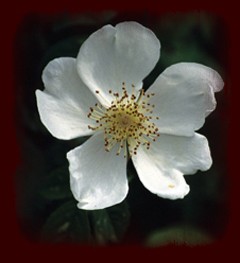
CLAN OF TUBAL CAIN

The Coal Black Smith -- by Ian Chambers |
Tubal Cain, tutelary deity of the Clan of His name, has a place now in modern Traditional Witchcraft, possibly originating out of a comment in The White Goddess by Robert Graves. In this part of The White Goddess, Graves is talking of the “love-chase” (The Case Song transcribed from the famous trial of Isobel Gowdie) and the transformative procession that takes place between the “Divel” and “Our Lady”. Here, the Divel may be taken to be a title of the Magister of the Coven in his role as the Horned God, whilst Our Lady is the Maiden both assuming the actual apotheosis of the deities they represent. Thus, the Divel is Tubal Cain, the Coal Black Smith of the famous song title The Two Magicians. Robert Graves associates this with seasonal transformation, but I would like to suggest further associations less to do with the seasons and more closely allied with Gnosis and climbing the Trees of Life and Wisdom to reach for the starry crown from the lowest depths of Annwn. The tree is traditionally ash, beneath which the three Norns, Wyrd Sisters, or Fates measure out the destiny of men. It has four worlds, similar to the Qabbalistic Tree and Hermetic and Theurgic schemes, with branches reflecting these horizontally upon it. At the sphere of the manifest world, Abred, Midgard, these vertical planes can become horizontally placed upon the compass points and the tree becomes a allegorical spiral, weaving outwards from Annwn to return again in an endless dance. The Horn Child is the son of the Triune Goddess, emanating from the highest realm and becoming manifest through the lunar sphere. From here, He literally descends to the earthly plane bringing the light with Him as Lucet, the Light-bearer, carrying his Mother’s spark to Her lower levels of the tree – the fruit which drops to the ground carrying within it the seed. This fall can be represented as the Horn Child beginning his solar journey, or the journey of The Plough or Haywain through a complete set of lunar cycles (the traditional year and a day) around the pole star or Axis Mundi (representing the Tree as central axis upon which the Spiral Castle turns). He drops into our compass, then, at the Kingdom described in letters to Norman Gills as belonging to Lucet, the Angel of Light. This is the manifestation of Divinity, He is birthed from the infinite ineffable Heavens and given manifest form, being partially of both worlds at this point. He falls to Earth and progresses to the land ruled by Carenos, the wild and ecstatic sphere of Pan, the God of all nature, the lusty goat-foot God. In this aspect, the Mother Earth provides nourishment. Falling still further, the Horn Child dies to the earthly plane of the manifest and enters Annwn, ruled by Nodes as Lord of the Mound, entering the Hollow Hills. In the Underworld, he achieves the necessary keys to ascend and assume His crown. Transformed, He arises and moves once again to the sphere between earth and Heaven, the world of Tettens, and the Son is become the All Father, where his masculine energy meets with the femininity of the Mothers and begets the Horn Child again. Cochrane relates the Star or Horn Child to Dionysus and we find a possible parallel that offers a hint of the Coal Black Smith. Tubal Cain, as a Smith, has command over fire, which is the light, the fruit of His mother’s tree. With this element, together with water and air, He holds the knowledge to create and transform material, turning mineral into a new substance. This is pure alchemy and represents the journey of the soul or force to manifest form, mineral, back to spirit, or the Cosmic Soul. In the Love-Chase, famously recorded in folk song as a progression of shifting shapes, the male figure transforms and is pursued by the female in a predatory shape. This is the same story of how Taliesin originates out of Gwion Bach. Taliesin and Tubal Cain are similar aspects of a magician figure in this instance and the chase can take place around the compass, up and down the tree, and represent a guide to our progress. To elaborate, then, the smith, as a master of transformation, assumes the shape of a hare, a “mad” creature that makes itself visible around March. The change is made by the male participant in the name of the Divel, or Tubal Cain, Himself. He is also found in the pursuing Hound, as the creature of Annwn, the fairy beasts who fetch their own back to the Queen of Elfame – Hence the Transformation in “Our Lady’s Name, for to fetch thee hame”. Here He can be found as the New King seeking out the Old Wily King as the young buck locks horns with Old Stag for the right of the rut. He is, then, the Hunter, the Hunted and the Hunt itself, or the Roebuck in the Thicket. The pair move through three other transformations in a cycle until, finally, He is caught as a mouse upon the milling floor and devoured by the cat. This reminds us of Gwion who is eaten as a grain of wheat by Cerridwen, the White Goddess in Graves, as a bird. Here, he grows in her belly and is born as Taliesin, the wisest of Bards. Following the mythic progress of the Horn Child, we can assume that this represents the descent into Annwn, the tomb/womb, and the subsequent rebirth as the New Old God in the ascent as a magical being with power over the elements rising up into Heaven. This, the conclusion of the chase, must occur at the Kingdoms of Nodes, who presides over the entrance to the Mound, and Tettens, as psychopomp. We might compare this myth to the Cult of Dionysus, whose rites were attended by women that he would pursue, openly luring them from their husbands to his wild dance. In this instance, He is hunter predating women to make orgiastic love to them. But the orgy turns to blood lust and the living God, along with all his creatures, beasts of the woods, are ripped apart and devoured by the women. Hephaestus Hephaestus, the Greek Vulcan, was married to Aphrodite, “Love”, with whom he fathered “Harmonia”. In one version, Harmonia is born of the adulterous affair between Aphrodite (Venus), Hephaestus’ wife, and Ares (compared by the Roman’s with their agricultural warrior God Mars), her lover. It was also His forge from which Prometheus stole the fire. Like Tubal-Cain, he is lame and makes for himself a wheeled chair, or Chariot, with which he can overcome his disability. Before this, he gets about by walking with a stick. Both of these allegories indicate the Tree and Compass as vehicles through the worlds. As Tubal Cain, he is the Old God wed to the triune Goddess. Their daughter, Harmonia (Harmony), completes the triad of Truth, Love and Beauty. He is lame because Zeus, the Greek Sky God and All Father, took him by the leg and threw him from Olympus, from where He fell to the Earth and was lamed. The association with fire and transformation, the marriage, or at least coupling, with the Greek Kharites who variously attended Aphrodite or Hekate, associates Hephaestus with “inspiration” or “knowledge”. He knew the Kharites in the sense that Adam “knew” Eve – they joined together as two opposing forces to birth Harmony. In this sense, using the Tetragrammaton, He is Y while the Kharites/Aphrodite is H, the Horn Child is V while Harmonia is the final H. In The White Goddess, Graves discusses the maze dance or Troy Town (a name used by EJJ Sacred Mask Sacred Dance) in reference to the Sacred King’s journey to the Spiral Castle, there to await rebirth. Later, according to Graves, the sacrifice became laming and dressing in bull skins, later replaced by circumcision. Lameness is a trait of the Smith God, while Graves makes the association with Dionysus etymologically via the name to render it Lame God of Light. In one legend of Hephaestus, he is lamed by his mother throwing him from Olympus and the Smith God appears to be lamed by a woman, either lover or mother (or perhaps both). “The Three Graces [Kharites] are thus explained as the Love-goddess Aphrodite in triad; and when they invoke Dionysus at Elis they are calling their lame buskined husband to perform the act of love with them.” Like King Arthur, the Smith God is deceived by his partner, who makes love to another (the new Sacred King). However, in the coital act comes the terrible price, begetting the next Sacred King upon the Goddess costs dearly every seven months or years – “as the drone dies after coupling with the Queen bee…” by way of its genitalia exploding, so to is the Sacred King, the Smith, emasculated, lamed. Therefore, while the two songs Two Magicians / Coal Black Smith and the Anne Baites/Isobel Gowdie Chase Song are compatible. Whilst in one it is the male aspect predating the female, the other shows the female predating the male. Both conclusions are the same, the polar energy of creation and death in the final act of the Smith or Sacred King. So, the Labyrinth, Troy Town and the maze dance represent the descent and ascent of Tubal Cain, the Smith God as Sacred King, through the realms from the fall to earth which lamed him, to his love-chase which will ultimately proceed to his coupling and rebirth as the new Horn Child. |